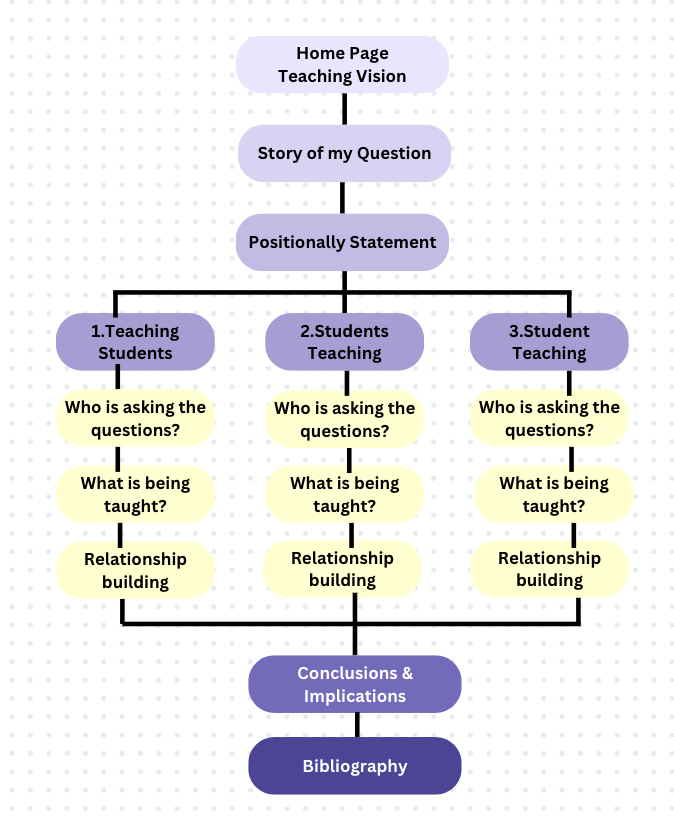Welcome!
Hello! My name is Ms. B. This year, I student-taught first grade and transitioned to kindergarten midway through the year at Benjamin B. Comegys in West Philadelphia, Pennsylvania. Welcome to my teaching portfolio, where I am exploring the positions of teaching students, students teaching, and student teaching in relation to authority in the classroom. To the left is a website map of how I envision readers of my portfolio clicking through the different tabs. Please feel free to reference this image as frequently as you like! As you read through, at the bottom of each page, there will also be a button that will take you directly to the next tab in this sequence. Please enjoy my exploration into the role of an authority figure in a kindergarten classroom.
TEACHING VISION
TEACHING VISION
The three central components of my teaching vision are…
Adapting to classroom circumstances
Listening with empathy
Fostering creativity
There will never be a day when the classroom circumstances mirror those from the day before. By circumstances, that could mean the number of students in the room, the time of year, if there is a birthday to celebrate, if both kindergarten classes are combining, or if I was a first-grade teacher for the first half of the year and now I’m being asked to teach kindergarten instead. The list of circumstances could go on and on. Thinking on my feet when things I didn’t foresee or plan for arise is a major skill I hope to grow and develop continuously.
Working with others requires a base level of empathy, in my opinion. Especially for elementary-aged children who may not developmentally understand a social-emotional interaction and could describe it differently from how it actually occurred. Having a teacher who listens from a place of empathy is key. Whether a child is bumped on accident or not, it hurts their feelings that that occurrence took place. Therefore, I have to listen to how they feel so my response doesn’t invalidate their feelings but also teaches them that there is a difference between on accident and on purpose.
Children are so darn creative! I see it oozing out of their expressions, interactions, and ideas every day. However, much of the instruction presented isn’t always open-minded to giving students some agency to be creative. When, how, and where in daily instruction is it ‘okay’ for students to think outside the box? How can their creativity propel their understanding of course activities or material forward?
As I close my eyes, envisioning my ideal classroom, students are met at the door with an overwhelming sense of ease and comfort. Student work and art cover every wall, reminding them of their growth, persistence, and progress throughout the year. Taking a couple more steps in, I see sunshine pouring in through the open windows, a steady breeze streaming in, and noise from the surrounding community flooding our classroom. In the center of the room are three community tables surrounded by several chairs. Working at tables with one another, students will grow to appreciate the sharing of space and the value of working alongside their classmates. I see students working in partners, groups, and individually at these tables. In our classroom, students will learn just as much about empathy, sharing, apologizing, asking questions, and challenging norms - social-emotional learning - as they will the classic academic subjects. At the front of the room, hanging just above the carpet, where play-based learning occurs, are our classroom norms posted for all to see. They hand as a reminder of how we should carry ourselves in the room to be supportive, respectful, and caring of one another. Within our four walls, I hear a blend of laughter, never-ending strings of questions, students calling upon each other first to ask for help, then to me if need be, and an overwhelming sense of communal love. Love that is shown through asking others if they are okay when tears are shed or even if someone is having an off day.
